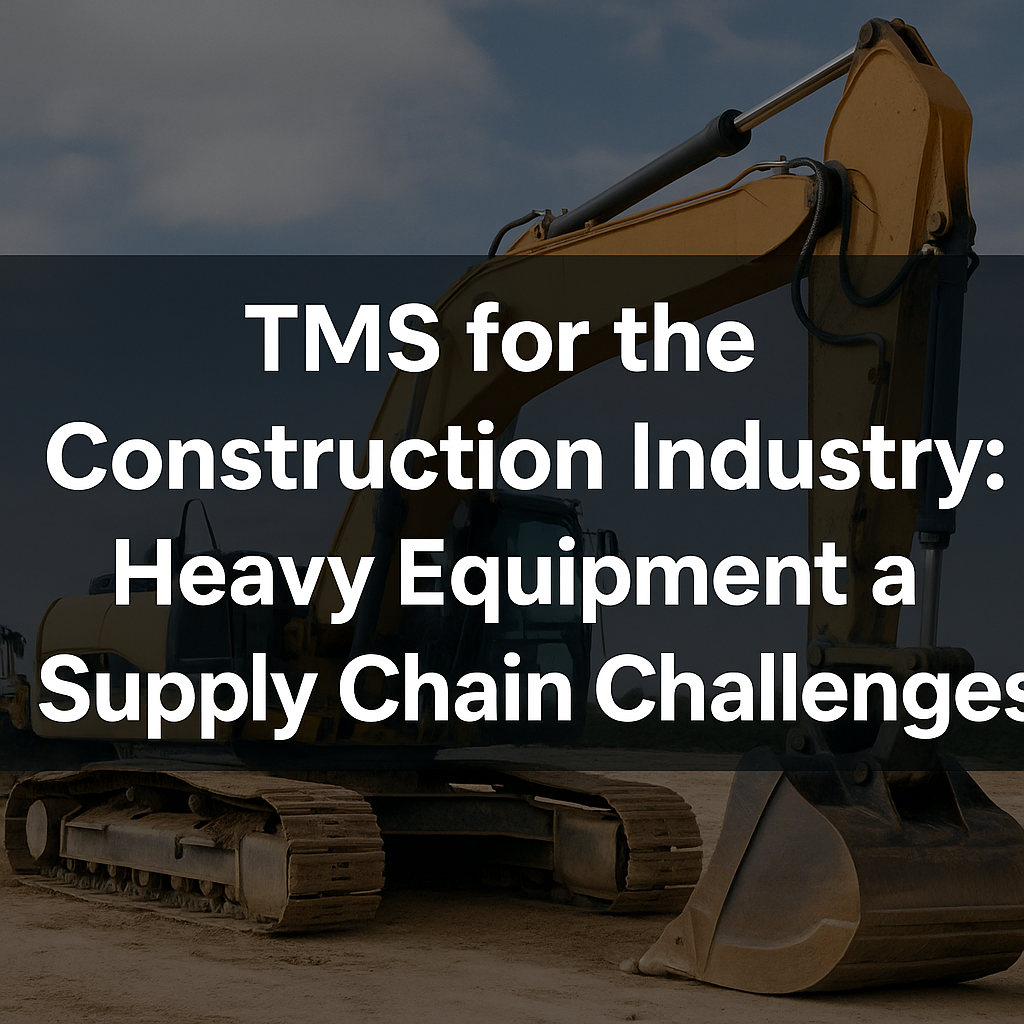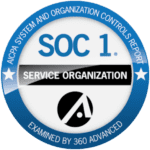Table of Contents
In the high-stakes world of construction, logistical inefficiencies can quickly morph from minor inconvenience to project-derailing catastrophe. An effective Transportation Management System (TMS) for the construction industry is vital to navigating the complex challenges associated with managing heavy equipment and intricate supply chains. But let’s face it, if construction logistics were simple, everyone would be doing it. Spoiler alert: they aren’t.
A TMS does more than move cranes and precast concrete slabs from one point to another; it is the backbone that supports the entire construction operation’s efficiency. The industry struggles with logistical nightmares such as last-mile delivery failures and site-to-site logistics complexities. However, a robust TMS optimizes these processes, converting proverbial roadblocks into smooth paths. I’ve seen firsthand the transformative power of a well-integrated TMS when orchestrating a particularly demanding project with Hatfield & Associates, where real-time tracking saved us from unexpected delays.
This article delves deep into the nuances of construction logistics solutions, examining the indispensable role of a logistics manager, sustainable practices, and innovative techniques that enhance TMS efficiency. For the innovative minds at the helm of construction firms, understanding these logistics intricacies could mean the difference between a budget-blowing fiasco and a seamlessly executed project. Join us as we explore these challenges and solutions, demonstrating how industry leaders turn logistical chaos into a symphony of coordinated precision.
Understanding TMS in Construction
When I first encountered transportation management systems (TMS) in construction, I was floored by the sheer scope and impact these systems have on the industry. Construction logistics solutions are often an unsung hero, harmonizing the chaos that can otherwise plague construction projects. At their core, TMS optimizes the movement of goods, ensuring that everything from foundational materials to heavy equipment arrives precisely when it’s needed. In turn, projects run smoother, deadlines are met, and profitability increases—a trifecta that every project manager dreams of. Let’s delve deeper to understand TMS and its indispensable role in construction.
Definition and Components of TMS
Transportation Management Systems are robust platforms designed to streamline and enhance logistics operations. These solutions provide tools for planning, execution, and optimization of shipments, managing everything from paperwork to route optimization. A seamless fusion of technology and logistics expertise, TMS plays a vital role in the construction sector, where timing and precision are paramount.
Key components include order management, freight planning and execution, visibility into shipments, reporting, and analytics tools to measure key performance indicators. With TMS, businesses can anticipate transportation challenges and mitigate them effectively. For those in the trenches of construction site logistics, understanding and leveraging a TMS can transform what might seem an insurmountable mountain into a mere molehill of a task.
Importance of TMS in Construction Projects
Having navigated the tumultuous waters of several construction projects myself, I can confidently declare that TMS is nothing short of a lodestar for project managers. In construction, where coordinating countless moving parts can feel like a high-wire act, TMS adds a safety net. It ensures building materials arrive on-site without delay or disruption, ultimately affecting the project’s timeline and success.
Without robust construction logistics solutions, delays in delivery can lead to cascading hold-ups on site. I once witnessed a situation where a delay in precast concrete delivery (more info here) set back an entire project phase. Thankfully, sophisticated TMS software helps avoid such pitfalls by providing real-time data and insights, allowing for proactive decision-making. Increased efficiency within supply chains also benefits financial forecasts and reduces waste—both literal and monetary.
For further exploration on enhancing your logistics management in construction, leverage transportation management solutions offered by experts like Hatfield & Associates, who excel in integrating TMS within complex project frameworks.
In sum, embracing TMS is not a mere option in construction management; it’s an essential investment, one that ensures clarity amidst the orchestrated chaos of project execution. Once established, the benefits echo throughout all stages of a project—much like the reverberations of a successful symphony.
Key Challenges in Construction Logistics
In the multifaceted world of construction, logistics serves as the backbone that supports the smooth flow of operations. The overarching challenge of construction logistics solutions lies in seamlessly integrating various components, ensuring they work in harmony to meet project timelines and budget constraints. While it might seem like an abstract puzzle, these logistics are very real hurdles that industry professionals face daily. Being able to foresee and mitigate these challenges is a hallmark of astute business leadership, akin to navigating a ship through treacherous waters—a skill that, if compromised, could have even the most seasoned captain running to shore.
One might say that handling construction logistics reminds us that control is a relative term, especially when one is working with the unpredictability of construction projects. From ensuring the timely delivery of materials to effectively coordinating site logistics, these challenges demand a strategic mind equipped with a robust understanding of supply chain intricacies and transportation solutions.
Managing Heavy Equipment Transportation
Transporting heavy equipment in construction presents a unique set of challenges that require strategic planning and precision. It’s not just about moving impressive machinery from point A to point B; it involves navigating legalities, ensuring safety, and minimizing cost. When coordinating heavy equipment, overlooking logistics can turn a gargantuan machine into an equally massive headache.
For instance, I recall a project where our heavy crane was stalled due to a regulatory snafu—an event that underscored the necessity of meticulous attention to transportation regulations and permits. Heavy equipment transportation must be coordinated around specific logistics windows to avoid blocking access routes or conflicting with other shipments.
Moreover, considerations like seasonal weather changes can affect road conditions—another unpredictable factor in an already complex equation. Ensuring that the machinery safely reaches its intended location requires a dance of precision akin to getting an elephant through a corridor without knocking over a vase. This is where professional insights into logistics become invaluable. External guidance, such as this comprehensive study by the Federal Highway Administration, can provide deeper insight into navigating these regulatory challenges (source: https://www.fhwa.dot.gov/).
Site-to-Site Logistics Complexities
Coordinating logistics between multiple construction sites is akin to juggling while riding a unicycle—it’s all about balance and timing. The complexity magnifies with the involvement of various projects at different stages, each demanding its own logistic considerations and solutions. With each site presenting a unique logistical puzzle, the professional tasked with logistics coordination must embody not just foresight but a certain level of creativity and adaptability.
Even something as seemingly straightforward as frequent site inspections can devolve into logistical quagmires if not planned meticulously. I have found myself amusingly tangled in such scenarios, where let’s just say, detailed project scheduling became my after-hours reading.
Logistical challenges can arise from variability in project timelines, changes in construction materials, and unforeseen disruptions. For decision-makers, understanding geography, evaluating transportation routes, and employing transportation management solutions are essential strategies to maintain fluid operations. For those looking to streamline these processes, consulting and implementing comprehensive transportation management solutions can be a game-changer—empowering business leaders to rise above standard logistical issues with finesse.
Last-Mile Delivery Issues
In logistics, the last mile is often depicted as the sprint that determines the race. It’s that critical juncture where timely delivery to the final destination can make or break a project timeline—a paradoxical concept where the shortest distance can often be the longest part of the journey. This is where construction logistics solutions truly get tested under pressure.
Delayed deliveries in the last-mile phase can cause unintended delays and cost overruns, requiring either modifications to project timelines or, in some circumstances, a complete overhaul of logistics plans. On one memorable project, the unforeseen delay of critical components due to a detour brought fresh insights into the intricacies of last-mile coordination.
Urban congestion, narrow delivery windows, and the precision required to deliver materials in densely packed areas all contribute to these challenges. Industry professionals must arm themselves with strategies tailored to accommodate these contingencies, including real-time tracking systems and collaboration with local municipalities, illustrating the importance of proactive logistics planning.
The use of innovative construction materials, such as precast concrete, has brought about dynamic solutions to some last-mile challenges due to its adaptable nature, allowing for a quicker assembly on site. Such solutions underline the importance of deploying versatile strategies in the ever-evolving landscape of construction logistics, and Hatfield & Associates stand ready to equip businesses with the insights and systems required to excel.
Solutions for Effective Construction Logistics
In the ever-evolving construction industry, managing logistics can feel akin to juggling while riding a unicycle—challenging, to say the least. Effective construction logistics solutions are crucial to the seamless execution of construction projects, ensuring the timely delivery of building materials and avoiding costly transportation challenges. These solutions form the backbone of successful site logistics, linking various elements, from precast concrete production to the final touches on a skyscraper. Let’s delve into how these solutions can enhance operational efficiency and drive project success.
Role of a Construction Logistics Manager
The construction logistics manager is, quite literally, in the driver’s seat when it comes to orchestrating a smooth operation on the site. Their responsibilities encompass the planning, implementation, and oversight of logistics activities. They ensure that construction materials arrive on time, heavy equipment is available when needed, and hazardous materials are managed safely and efficiently. By coordinating these critical components, the logistics manager minimizes delays and maximizes productivity on site, embodying a conductor guiding an orchestra through a symphony.
Keeping everything in harmony is no small feat. During one of my escapades into the world of construction, I witnessed firsthand how a hiccup in logistics—a simple delay in the arrival of concrete mixers—can disrupt the entire rhythm of site operations. The logistics manager’s expertise is vital in addressing such hiccups, using a blend of foresight and adaptability to navigate complex systems. These professionals transform potential chaos into seamless workflows.
Logistics Planning and Scheduling Techniques
Efficient logistics planning and scheduling are foundational pillars in the construction industry. Effective techniques can mean the difference between a well-executed project and one fraught with delays and wasted resources. Leveraging software tools and technologies for logistics planning allows for the real-time adjustment of schedules, responding adeptly to unexpected changes or site requirements.
Strategically planning for fluctuations in weather conditions or unforeseen material shortages reflects proactive management. The transportation management solutions provided by Hatfield & Associates can guide decision-makers in optimizing schedules and maintaining clear communication channels across teams. By utilizing advanced software, companies can achieve a balance between just-in-time deliveries and resource availability, ensuring projects stay on track and within budget.
Collaborating with Third-Party Logistics Providers
Involving third-party logistics providers can be a savvy move, especially when projects demand specialized expertise or resources beyond in-house capabilities. These collaborations can significantly enhance efficiency, offering access to experienced personnel, robust networks, and technological assets that simplify complex logistics operations.
One memorable project involved collaborating with a third-party provider to handle the intricate demands of hazardous materials on a job site. Their specialized knowledge and handling protocols vastly improved safety standards and compliance, proving invaluable to the project’s success. The synergy between internal teams and external partners drove optimal performance and adherence to tight timelines.
According to a study by the National Academies of Sciences, Engineering, and Medicine, effective third-party partnerships can reduce transport costs and improve logistical efficiency in demanding projects (source: Transportation Research Board). By integrating such collaborations into their strategies, construction companies enhance their capacity to manage logistics challenges, yielding better outcomes.
Embracing construction logistics solutions empowers professionals to tackle on-site challenges with finesse and precision. Whether through optimizing logistics planning or harnessing the talent of external partners, enhancing the logistics interface not only streamlines operations but also propels projects toward successful completion. For a deeper dive into transportation management solutions, explore Hatfield & Associates’ comprehensive guide. And remember, for grounded durability in your projects, don’t forget about using precast concrete.
Enhancing TMS Efficiency
In the bustling world of construction logistics, where deadlines are tight and materials are heavy, optimally utilizing Transportation Management Systems (TMS) is essential for efficiency and cost-effectiveness. Streamlining operations can drastically improve timelines and project outcomes, often turning logistical chaos into coordinated symphonies. As someone who’s navigated through logistical quandaries more than once, I can attest that adopting robust construction logistics solutions is akin to having a trusted compass in a sprawling desert. Unlike the time I thought a digital compass could replace a traditional one—spoiler alert, it can’t—relying on sophisticated TMS can significantly amplify project efficiency and precision.
Leveraging Non-Asset-Based Carriers
While asset-based carriers own and operate their equipment, non-asset-based carriers provide increased flexibility and often at a lower cost. These carriers do not own the vehicles nor the heavy equipment themselves, yet they excel in coordinating transport using third-party resources. This method can be particularly advantageous in construction site logistics, where diverse transportation needs demand adaptable solutions. Think of it like borrowing your architect friend’s pencil instead of rushing to buy one yourself—while they handle the intricate lines, you save on the investment.
Non-asset-based carriers provide access to a wider array of transportation options, which can mitigate the risk of delays. Their ability to operate with various partners allows for swift adaptation to changes in supply chain demands. For those managing a construction project, the resulting reduction in overhead and increased efficiency can be crucial. By likening different transport options to an array of architectural designs you’re considering, the broader your access, the better the design you can execute.
Sustainable Practices in Construction Logistics
Embracing sustainable practices in construction logistics doesn’t only imply reducing emissions but also optimizing overall operations for long-term viability. Sustainability is like hitting two birds with one stone—environmental responsibility and cost savings. As I’ve often reminded my team during strained project timelines, “We’ll save both our planet and our budgets.”
Integrating sustainable logistics practices begins with using more efficient transport routes and lighter building materials. Precast concrete, for example, can reduce energy consumption given its lightweight properties, thus benefiting both the environment and the bottom line. It’s akin to ordering a side salad instead of fries—not initially the most appealing choice, but undeniably the wiser one in the long run.
Real-Time Tracking and Communication Systems
Construction logistics hinge on precise timing and coordination, akin to synchronized swimming at an Olympic level—impressive when it’s executed seamlessly, disastrous if missteps occur. Integrating real-time tracking and communication systems in construction projects ensures every participant, from site managers to drivers, can adjust to the rhythm as efficiently as a well-rehearsed team.
These systems provide a transparent view of material arrival times and transportation challenges, thus enabling more efficient project management. In construction industry terms, such technologies transform logistical blind spots into foreseeable landscapes. For instance, during one major project, leveraging real-time data meant we could reroute materials to avoid potential delays from inclement weather, ensuring that construction materials arrived just in time, like surprise celebrity guest appearances at a humble neighborhood event.
Enabling real-time tracking facilitates immediate adjustments to the construction logistics puzzle. With these solutions in place, project managers can make informed decisions faster, maintaining a steady pace toward successful completion. To explore how such systems integrate seamlessly with TMS, you might delve deeper into a guide on transportation management solutions, ensuring streamlined logistics from start to finish.
Table: Key Comparisons in Logistics Solutions
Aspect | Asset-Based Carriers | Non-Asset-Based Carriers |
|---|---|---|
Flexibility | Limited | High |
Cost | Higher | Potentially Lower |
Range of Options | Controlled, fixed assets | Broad, multiple partners |
Adaptability to Changes | Challenging | Effortless |
For further reading on sustainable logistics practices and their implications, one might consider an academic analysis like that from this scholarly source.
Case Study: Industry Solutions
In the bustling realm of construction, logistics solutions are the unsung heroes behind project success. Construction logistics solutions orchestrate the seamless movement of materials and resources to and from construction sites. From handling construction materials to managing transportation challenges, logistics play a crucial role in the construction industry. But theory and practice, as we all know, don’t always dance to the same tune. Let’s delve into specific industry solutions that have effectively conquered these challenges, bringing insights from real-world applications.
Samskip’s Approach to Construction Logistics
Samskip, a global logistics provider, showcases a successful approach to construction logistics that many firms could envy—if we’re being humble about our own logistics prowess. Their strategy leans heavily on intermodal transport, which harmonizes shipments across land and sea to deliver materials efficiently. Picture a symphony where each instrument, be it trucks, trains, or ships, plays its part without missing a beat. This method not only curbs transportation costs but also slashes carbon emissions, making it an eco-friendly choice.
One anecdote from my experience may strike a chord: I once witnessed a project where stringent timelines felt like tightropes. Yet, Samskip’s diligent coordination of multimodal transport ensured that even precast concrete arrived on time, enhancing the synergy of construction operations. This mastery of logistics execution is what makes their approach exemplary—a testament to the potential of intelligent logistics in transforming transportation challenges into smoothly-run operations.
Rapid Trucking Capacity and Nationwide Coverage
Rapid trucking capacity and nationwide coverage—a phrase that resonates like a promise to meet insatiable construction demands. Central to outstanding construction logistics solutions is the ability to mobilize vast trucking fleets swiftly and efficiently, ensuring critical building materials arrive at construction sites precisely when needed. Without exception, this capability has saved numerous projects from the brink of delay-induced disaster.
Picture yourself managing a sprawling infrastructure project — akin to assembling a jigsaw with missing pieces. By leveraging robust trucking capacities, not only are the pieces delivered on time, but you also prevent the unpleasant surprise of having an entire side project disrupted due to a missing load of materials. It’s akin to anticipating a hiccup right before a speech and having contingency measures ready. With coordination akin to a well-oiled mechanism, this logistical precision mirrors a grand maestro leading an orchestra even through heavy equipment maneuvers.
For deeper insights into optimizing logistics with cutting-edge systems, Hatfield & Associates provides comprehensive transportation management solutions that align trucking and supply chain operations seamlessly, capturing the essence of dependable logistics.
This level of logistics acumen is supported by research from the Federal Highway Administration, which emphasizes the transformative role transportation solutions play in the broader supply chain (Source: FHWA Study on Freight Transport). Embracing such strategies, construction firms can tackle site logistics head-on, ensuring the flow of building materials matches the pace and scale of today’s ambitious construction projects.
Ultimately, these methods forge a resilient chain that binds every stage of construction, making the once daunting prospect of logistics management an integral, even enjoyable, element of the construction endeavor—a little like finding the one flat-pack furniture piece that doesn’t come with an existential crisis.
Conclusion: Overcoming Supply Chain Hurdles
In conclusion, overcoming supply chain hurdles in the construction industry requires strategic planning and robust logistics solutions. Construction projects face unique challenges, such as managing heavy equipment, demolition work, and coordinating the delivery of construction materials. Effective construction logistics solutions are vital for navigating these complexities.
One essential strategy is employing advanced transportation management solutions to streamline the process. Companies like Hatfield & Associates offer systems and integrations tailored for this purpose. Additionally, leveraging innovations like precast concrete can significantly reduce potential delays and increase efficiency.
Here’s a brief table illustrating key strategies:
Strategy | Benefit |
|---|---|
Transportation Management | Optimizes delivery schedules |
Precast Concrete | Reduces on-site construction time |
Just-In-Time Inventory | Minimizes storage costs and material waste |
By prioritizing these approaches, firms can ensure timely project completion and cost-effectiveness. As an industry veteran, I’ve walked into countless sites where ineffective planning caused chaos—akin to a three-ring circus minus the popcorn. But with the right logistics solutions in play, what was once a juggling act can transform into a well-oiled machine.
Future Trends in Construction TMS
In the ever-evolving world of construction logistics solutions, transportation management systems (TMS) are crucial for optimizing operations. As we look to the future, several trends will shape how TMS is used in construction projects.
Future Trends in Construction TMS
- Increased Automation: Automation remains paramount. TMS systems are now capable of handling tasks that previously required manual input, reducing errors and freeing up human resources. This trend is only expected to grow, making data entry—and perhaps even coffee-making—a thing of the past.
- Integration with IoT: The Internet of Things (IoT) is transforming site logistics. By integrating TMS with IoT devices, companies can track building materials in real-time, ensuring timely delivery and minimizing costly delays.
- Sustainability Focus: As the construction industry pivots towards sustainability, TMS must adapt. Future systems will prioritize eco-friendly logistics, such as optimizing routes for lower emissions.
- Advanced Analytics: The future of TMS will feature advanced analytics, transforming data into actionable insights. Business decision-makers can anticipate efficiencies that previously seemed elusive—a pleasant surprise, unlike when I accidentally order twice the number of bricks needed for a project.
For a deeper dive into transportation management solutions, Hatfield & Associates provides a comprehensive guide with invaluable insights.




